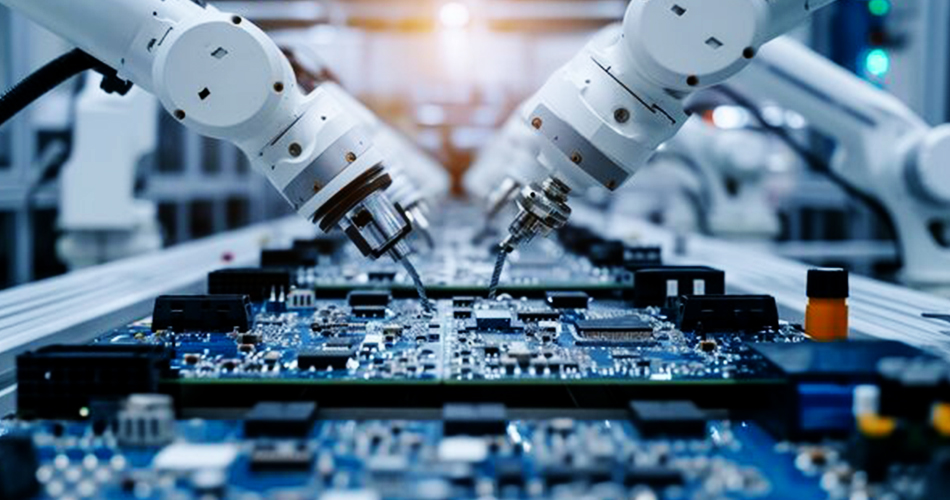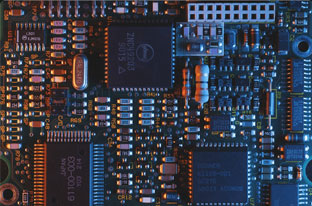* On your first PCB Assembly order!
* Up to $300 discount
 C - A L L E Y
C - A L L E Y 
Home | Events | PCB | About Us | News | Contact Us
The details in the SMT (Surface Mount Technology) chip processing flow are crucial to the quality of PCB (Printed Circuit Board) production. The process can be summarized as follows: customer order → customer data → purchased raw materials → incoming material inspection → online production → packaging and after-sales service.
Preparation Before SMT Chip Processing
- Circuit board information (Gerber files)
- Bill of Materials (BOM)
- Supporting documentation
Detailed Process of SMT Chip Processing
1. Material Procurement, Processing, and Inspection
The material purchaser acquires the materials according to the BOM provided by the customer to ensure accuracy in production. After purchasing, materials undergo inspection and processing, which may include tasks like cutting rows of pins and forming resistance pins. Inspection is essential for maintaining production quality. Nordea sources materials from specialized suppliers, ensuring that both upstream and downstream procurement channels are complete and effective.
2. Silk Screen Printing
Silk screen printing, also known as screen printing, is the initial step in SMT processing. This process involves applying solder paste or adhesive to PCB pads in preparation for component soldering. A solder paste printing machine is used to push solder paste through a stainless steel or nickel mesh onto the bonding pads. If the steel mesh is not provided by the customer, the processor must create it according to the specified documentation. Additionally, since the solder paste needs to be kept frozen, it must be thawed to a suitable temperature before use. The thickness of the solder paste applied is also adjusted according to the specific requirements of the PCB.

Detailed SMT Chip Processing Flow
3. Dispensing
During SMT processing, the adhesive used for dispensing is typically red. This adhesive is applied to the PCB to secure the components during welding, preventing them from falling or being incorrectly soldered due to their weight or lack of securement during reflow soldering. Dispensing can be done manually or automatically, depending on the process requirements.
4. Mounting
The placement machine quickly and accurately mounts SMC (Surface Mount Components) or SMD (Surface Mount Device) components onto the designated pads of the PCB without damaging the components or the board. This step occurs before reflow soldering.
5. Curing
Curing involves melting the adhesive used for mounting to permanently bond the surface-mounted components to the PCB pads. This is typically achieved using thermal curing methods.
6. Reflow Soldering
Reflow soldering is a process that achieves mechanical and electrical connections between the solder ends of surface-mounted components and the PCB pads by melting the pre-applied solder paste. The process relies heavily on the effect of hot air flow on the solder joints, with the colloidal flux physically reacting to facilitate SMD welding at high temperatures.
7. Cleaning
Once the welding process is complete, the surface of the PCB board must be cleaned to remove rosin flux and any tin balls, which could potentially cause short circuits between components. This is accomplished by placing the welded PCB into a cleaning machine to eliminate harmful flux residues and pollutants from the assembly process.
8. Detection
Inspection entails assessing the welding and assembly quality of the PCB after it has been assembled. This includes using AOI (Automated Optical Inspection) systems, flying probe testers, and conducting ICT (In-Circuit Test) and FCT (Functional Test) function tests. The Quality Control (QC) team performs spot checks on PCB quality, identifying issues such as substrate problems, flux residue, and assembly failures.
9. Rework
Rework in SMT typically involves removing and replacing non-functional components, have damaged pins, or are incorrectly placed. Maintenance personnel must be familiar with the repair processes and techniques. The PCB is visually inspected for missing components, incorrect orientations, faulty soldering, or short circuits. If necessary, defective boards are sent to a specialized repair bench for testing, which may include ICT or FCT function tests, until the PCB functions correctly.
Why Choose China PCBA Supplier KSPCBA as Your SMT Chip Processing Manufacturer?
– Experienced and skilled team
– State-of-the-art equipment
– Strict quality control
– Excellent customer service
– Competitive price

Please send Email to kspcba@c-alley.com or call us through +86 13828766801 Or submit your inquiry by online form. Please fill out below form and attach your manufacturing files( PCB Gerber files and BOM List) if need quotation. We will contact you shortly.
 +86 13828766801
+86 13828766801 kspcba@c-alley.com
kspcba@c-alley.com https://www.kingshengpcba.com/
https://www.kingshengpcba.com/ 2/F, Building 6, Tangtou 3rd Industrial Zone, Tangtou Community, Shiyan Town, Baoan District, Shenzhen, China, 518108
2/F, Building 6, Tangtou 3rd Industrial Zone, Tangtou Community, Shiyan Town, Baoan District, Shenzhen, China, 518108